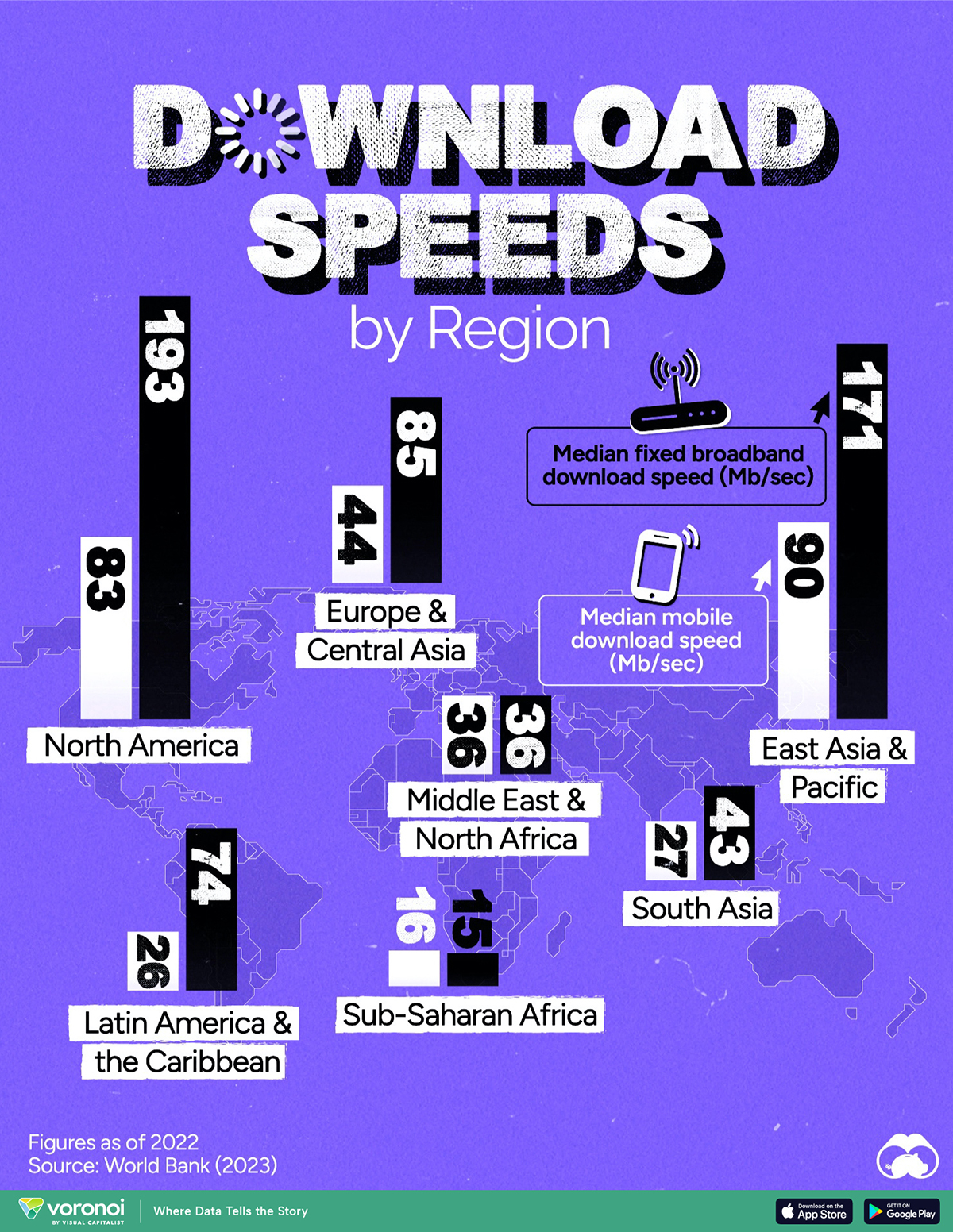In today’s fast-paced world, internet speed isn’t just a convenience—it’s the driving force behind how we work, play, and connect.
In this map, we illustrate median download speeds in each global region, based on data from the World Bank’s Digital Progress and Trends Report 2023.
North America and East Asia Have the Speediest Internet
According to the World Bank, download speeds in high-income countries increased significantly between 2019 and 2023, while speeds in lower-income countries stagnated.
As of 2022, North America and East Asia have the speediest internet.
Region Median mobile download speed (Mb/sec) Median fixed broadband download speed (Mb/sec) East Asia & Pacific 90 171 Europe & Central Asia 44 85 Latin America & the Caribbean 26 74 Middle East & North Africa 36 36 North America 83 193 South Asia 27 43 Sub-Saharan Africa 16 15 This difference in broadband speeds can mainly be attributed to investment.In 2020, nearly 90% of global telecommunication investment came from East Asia and the Pacific, Europe and Central Asia, and North America. These regions not only concentrate the highest-income population but also the top technology hubs.
Meanwhile, low- and middle-income regions such as Latin America and the Caribbean, South Asia, and Sub-Saharan Africa accounted for less than 10% of total investment.
Most of the investment is directed towards fiber optic and 5G mobile networks. According to the mobile industry association GSMA, mobile operators alone are projected to invest more than $600 billion between 2022 and 2025, with 85% of the total allocated for 5G.
In 2023, broadband speeds in high-income countries were 10x faster for fixed connections, and 5x faster for mobile connections compared to those in low-income countries.
Fixed broadband connections, which provide high-speed internet to residences or businesses, reached 38% of the population in high-income countries. In comparison, fixed broadband penetration was only 4% of the population in lower-middle-income countries and almost zero in low-income countries.
Mapped: Internet Download Speeds by Region
March 30th, 2024
March 30th, 2024
Courtesy of Visual Capitalist, a look at global internet speeds by region. Interesting to speculate how African economies may be transformed when internet capacity reaches that of the rest of the world:
This entry was posted on Saturday, March 30th, 2024 at 12:07 am and is filed under Uncategorized. You can follow any responses to this entry through the RSS 2.0 feed.
Both comments and pings are currently closed.
ABOUT
Focusing primarily on The New Seven Sisters - the largely state owned petroleum companies from the emerging world that have become key players in the oil & gas industry as identified by Carola Hoyos, Chief Energy Correspondent for The Financial Times - but spanning other nascent opportunities around the globe that may hold potential in the years ahead, Wildcats & Black Sheep is a place for the adventurous to contemplate & evaluate the emerging markets of tomorrow.

